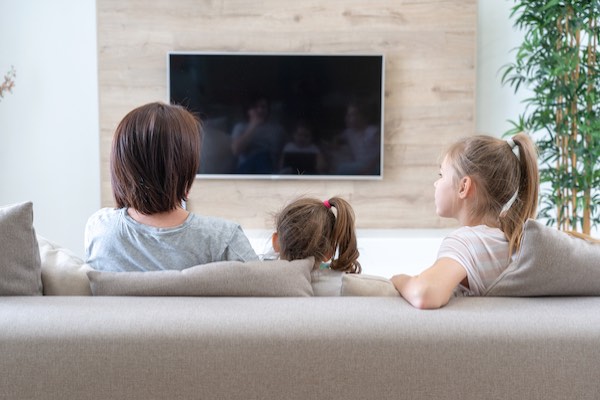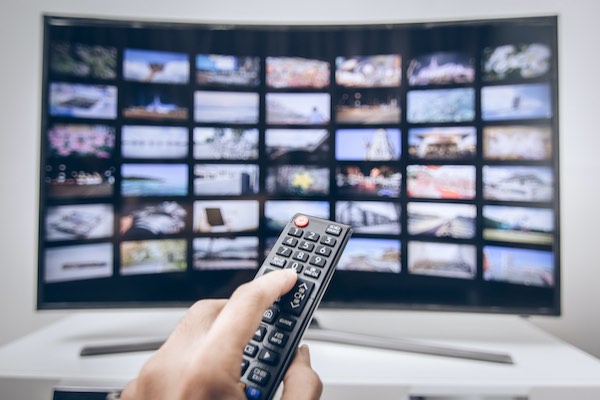Cutting the cord has become more than just a trend; it’s a lifestyle shift that reflects the evolving ways people consume entertainment. Traditional cable TV and antennas are no longer the only means to enjoy your favorite shows, sports, or news. A plethora of alternatives now exist, offering a range of options that cater to diverse interests and budgets. From internet TV services to innovative hardware solutions, the landscape for TV reception has been transformed. This opens up new avenues for viewers who seek flexibility, affordability, and a tailored viewing experience. Explore the various methods to tap into this revolution and redefine how you watch TV
7 Best Ways to Get TV Reception Without Cable or Antenna?
1. Internet TV Services
YouTube TV
YouTube TV offers a comprehensive live TV experience, similar to what you’d get with a traditional cable subscription. With channels like ABC, CBS, NBC, Discovery and Disney, you’re not missing out on much. One of the standout features is the “cloud DVR” service, allowing you to record and store shows for up to nine months. The service is accessible on various devices, including computers and mobile devices. Best of all, one subscription can cover up to six people in your household
Hulu Live
Hulu Live is another strong contender, slightly less expensive than YouTube TV but offering many of the same channels. However, it does lack a few networks like PBS, Comedy Central, and MTV. One of the perks is the 50 hours of storage for TV shows you want to record. Additionally, Hulu frequently creates exclusive content, adding more value to your subscription
Sling TV
If you’re looking for a budget-friendly option, Sling TV is your go-to service. It offers popular channels like the History Channel, A&E, Comedy Central, and AMC at about half the cost of YouTube TV and Hulu. Despite its affordability, you still get access to live news, sports, and other content you’d expect from a basic cable subscription
FuboTV
FuboTV wasn’t specifically mentioned in the articles, but it’s another internet-based TV service that’s gaining traction. Known for its focus on sports, FuboTV offers a variety of channels, including news and entertainment options
2. Use a Streaming Device or Stick
There are many streaming devices available in the market that allow you to stream shows through apps or channels on your TV. Some popular brands include Roku, Amazon Fire TV, and Google Chromecast. These devices essentially turn your TV into a smart hub, where you can access a plethora of apps and channels, from Netflix and Hulu to live sports and news.
How to Set Up a Streaming Device
- Connect the Device: Plug the streaming device into the HDMI port on your TV.
- Configure Settings: Follow the on-screen instructions to connect the device to your Wi-Fi network.
- Download Apps: Once connected, you can download various streaming apps like Netflix, Hulu, or YouTube TV.
- Start Streaming: Open the app of your choice and start streaming your favorite shows.
3. Use a TV Tuner
A TV tuner is a nifty device that allows you to receive digital broadcast signals over the airwaves. This means you can access local channels that you’d typically need an antenna for. The process is straightforward: connect the TV tuner to your TV or computer, and it will pick up all the free-to-air channels in your area.
The TV tuner decodes digital signals, enabling you to watch local channels without the need for a traditional antenna. It’s an excellent option for those who want to keep things simple while still having access to local news, sports, and entertainment channels.
How to Setting Up a TV Tuner
- Connect the Device: Attach the TV tuner to your TV or computer via the appropriate ports.
- Scan for Channels: Once connected, scan for available channels. This usually involves going through the settings menu on your TV or software on your computer.
- Start Watching: After the scan is complete, you can start watching your favorite local channels.
4. Using Smartphones as Hotspots
If you have a smartphone with an unlimited data plan, using it as a hotspot can be a convenient way to stream shows on your TV. This method allows you to bypass the need for a traditional cable or antenna setup, offering a flexible solution for TV viewing.
Your smartphone acts as a Wi-Fi hotspot, providing an internet connection to other devices like your TV. You can then use streaming devices like Roku, Fire TV, or Google Chromecast to watch your favorite shows.
Setting Up Smartphone Hotspot for TV Streaming
- Enable Hotspot: Go to the settings on your smartphone and turn on the hotspot feature.
- Connect to TV: Use your TV or streaming device to connect to the smartphone’s hotspot.
- Start Streaming: Once connected, you can start streaming shows through various apps or channels.
5. Renting Physical Copies
Believe it or not, renting physical copies of shows or movies is still a viable option for those who want to watch TV without cable or an antenna. While it may seem a bit old-fashioned, it offers certain advantages that digital methods can’t match.
How Does It Work?
You can rent DVDs or Blu-Ray discs from libraries or rental stores and watch them on your TV or computer. Some libraries even offer streaming services for free with a library card.
Where to Rent Physical Copies
- Libraries: Many public libraries offer a range of DVDs and Blu-Rays that you can borrow for free.
- Rental Stores: Though increasingly rare, some specialized stores still offer movie rentals.
- Online Services: Websites like Netflix also provide a DVD rental service by mail.
6. DTV Converter Boxes
DTV converter boxes are another alternative for those who want to watch TV without relying on cable or an antenna. These boxes convert digital signals into analog signals, allowing older TVs to display digital broadcasts.
The DTV converter box is connected between your TV and an external antenna. It receives digital signals and converts them into analog signals that your older TV can display.
Setting Up a DTV Converter Box
- Connect the Antenna: Attach an external antenna to the converter box.
- Connect to TV: Use an AV cable to connect the converter box to your TV.
- Scan for Channels: Navigate through the converter box’s menu to scan for available digital channels.
- Start Watching: Once the scan is complete, you can start watching digital channels on your analog TV.
7. DIY Antennas
For the hands-on types, creating a DIY antenna is an exciting and cost-effective way to get TV reception without cable or an antenna. This method allows you to craft your own antenna using simple materials, offering a sense of accomplishment along with free TV channels.
A DIY antenna captures over-the-air digital signals, just like a store-bought antenna would. The difference is that you make it yourself using materials like coat hangers, screws, and a piece of wood.
Materials Needed
- Coat hangers or wire
- Screws
- A piece of wood or cardboard
- Coaxial cable
Step-by-Step Guide
- Prepare the Base: Use a piece of wood or cardboard as the base for your antenna.
- Attach the Wires: Cut and bend the coat hangers or wire to form the antenna elements. Attach these to the base using screws.
- Connect the Cable: Attach a coaxial cable to the antenna elements.
- Test and Adjust: Connect the DIY antenna to your TV and scan for channels. You may need to adjust the antenna’s position for optimal reception.
Conclusion
Embracing alternatives to traditional cable and antenna setups offers a liberating experience for TV viewers. With a multitude of options like internet TV services, TV tuners, and streaming devices, it’s easier than ever to customize your entertainment. These methods not only provide a cost-effective way to access your favorite shows but also give you the freedom to watch them on your terms. As technology continues to advance, the possibilities for TV reception without cable or an antenna are likely to expand even further, making it an exciting time to be a consumer of visual media
Frequently Asked Questions (FAQ)
Can I watch TV without cable or antenna?
Yes, you can watch TV without cable or an antenna through various methods such as internet TV services like Hulu Live and Sling TV, using a TV tuner, or even by setting up a DIY antenna.
Can I get local channels without cable and antenna?
Yes, you can get local channels without cable and an antenna by using a TV tuner that picks up digital broadcast signals over the airwaves. Alternatively, some streaming services offer local channels as part of their package.
Can I get reception on my TV without cable?
Yes, you can get TV reception without cable by using internet TV services, a TV tuner, a DIY antenna, or a DTV converter box. Each of these methods has its own set of pros and cons, so you can choose the one that best suits your needs.
How can I get local channels without cable?
Local channels can be accessed without cable through a TV tuner, a DTV converter box, or even a DIY antenna that you can make yourself. Some internet TV services also offer local channels.
How can I watch live TV for free?
You can watch live TV for free by using a TV tuner to access over-the-air channels or by setting up a DIY antenna. Some streaming services also offer free trials, allowing you to watch live TV for a limited time.
How do I scan for local channels on my TV?
To scan for local channels, go to the settings menu on your TV and look for an option like "Channel Scan" or "Auto-Tune." The exact steps may vary depending on your TV model, but generally, you'll need to select this option and follow the on-screen instructions to scan for available channels.


